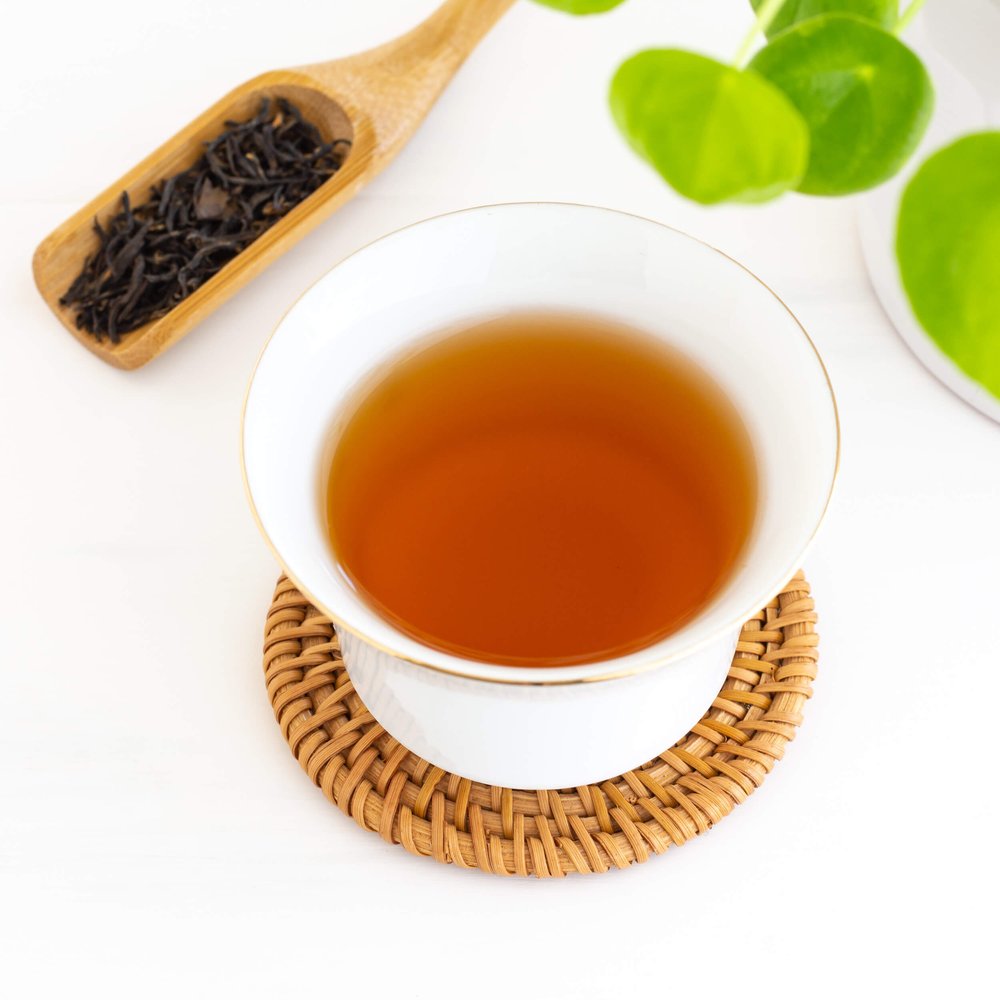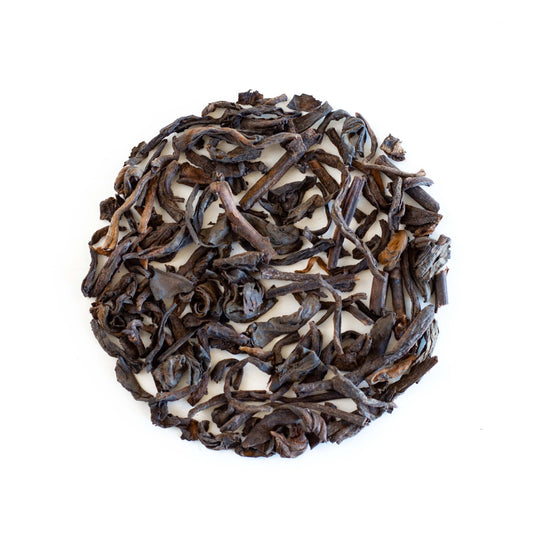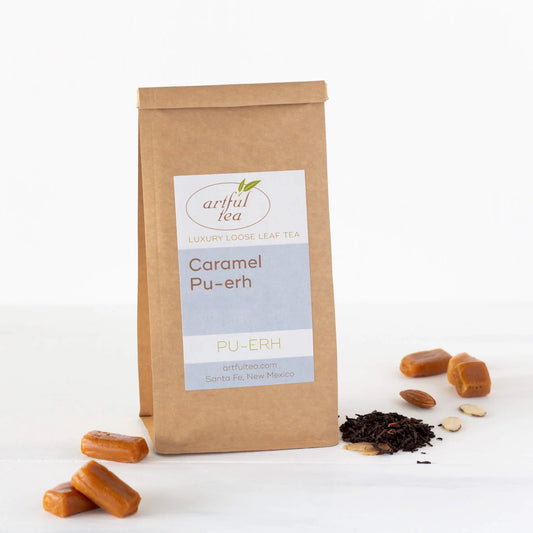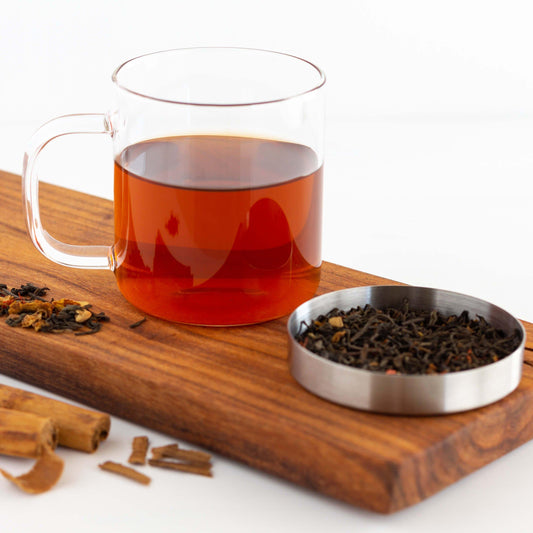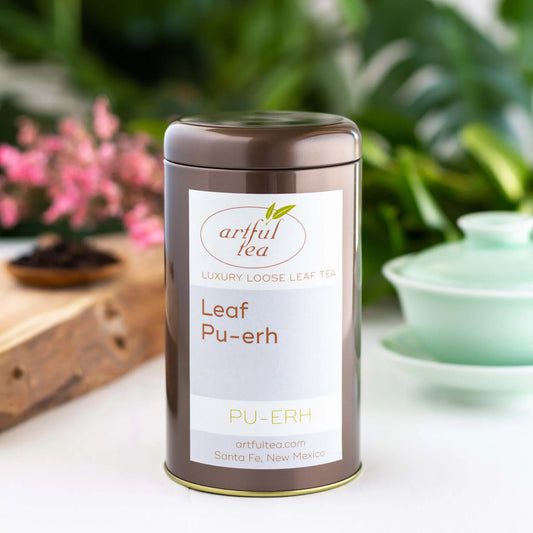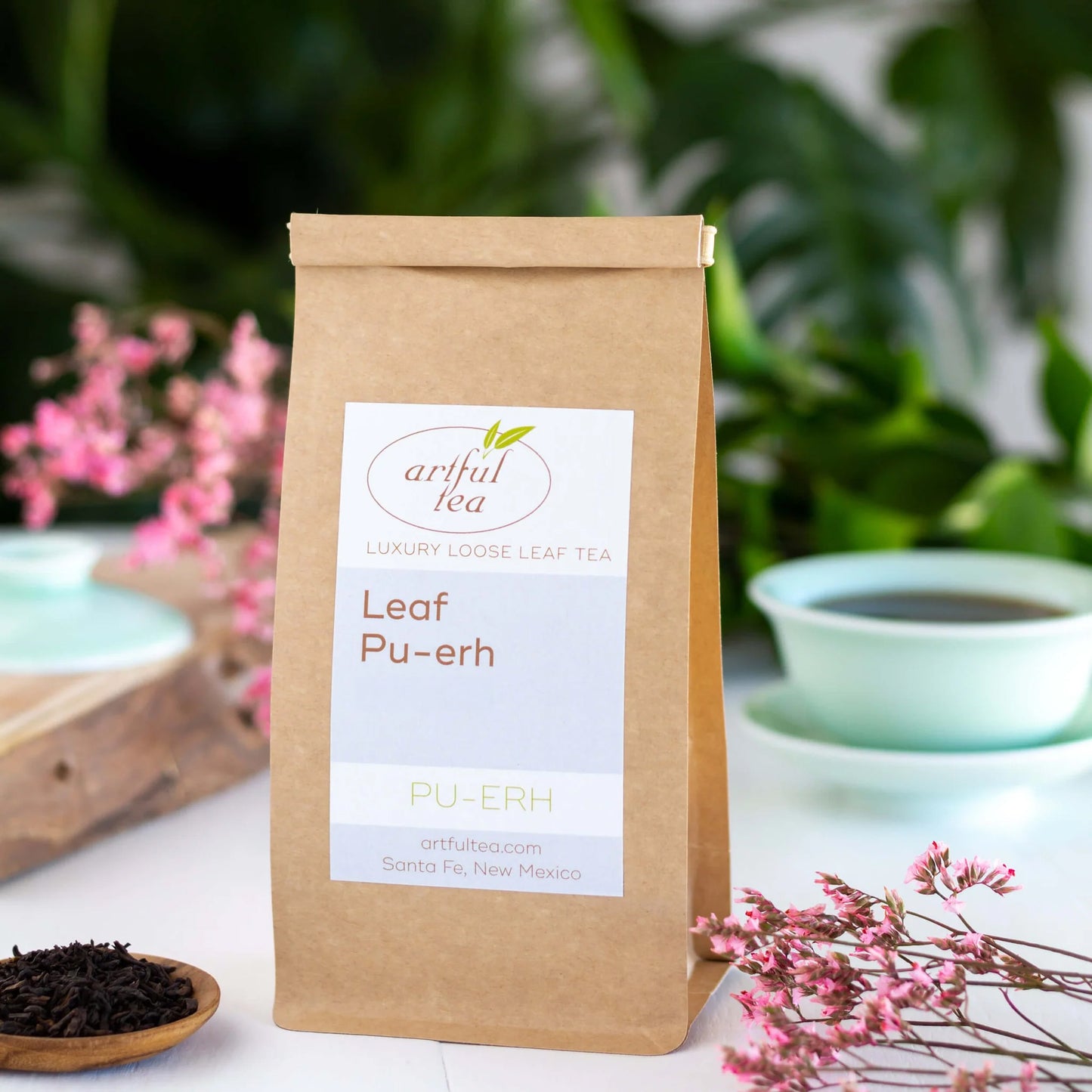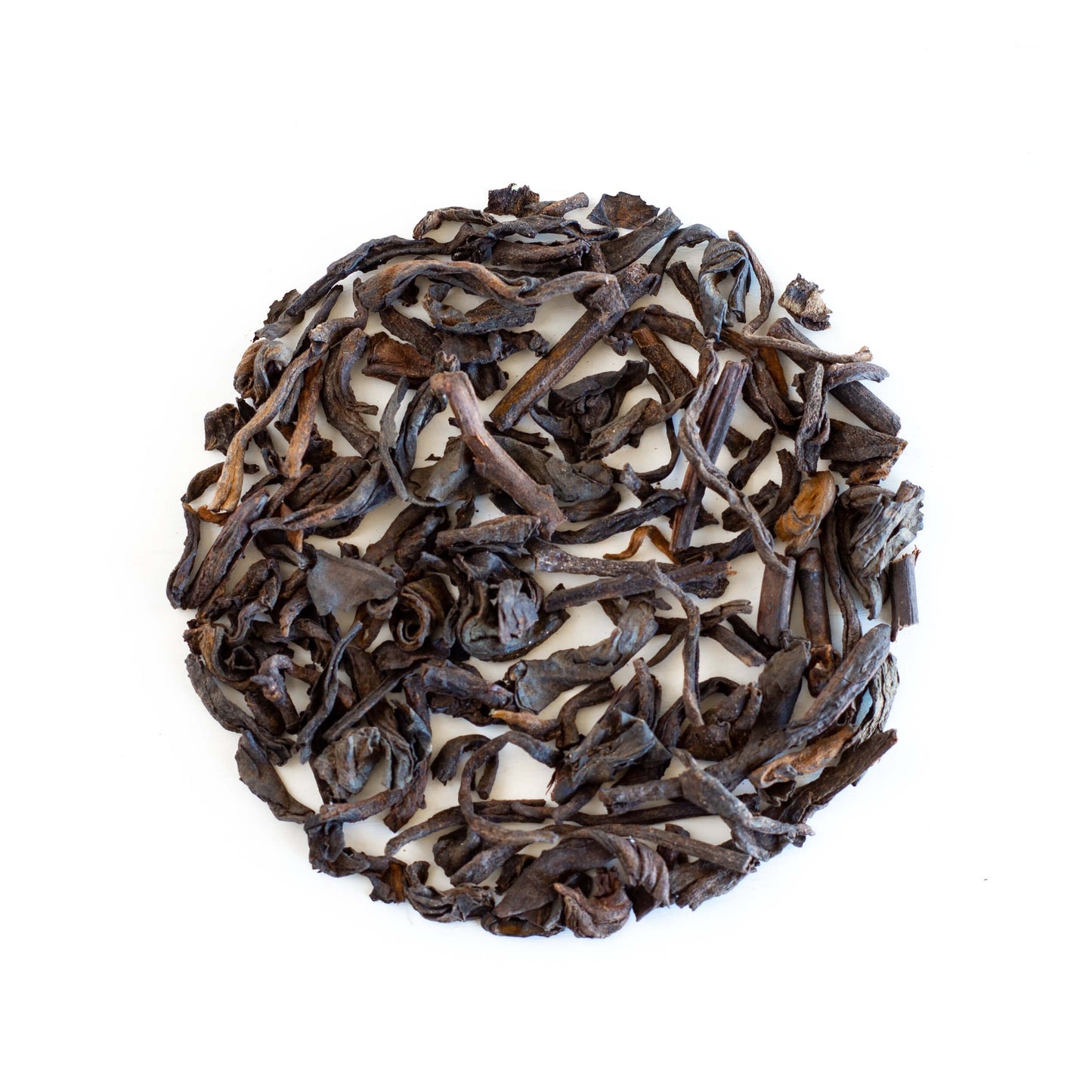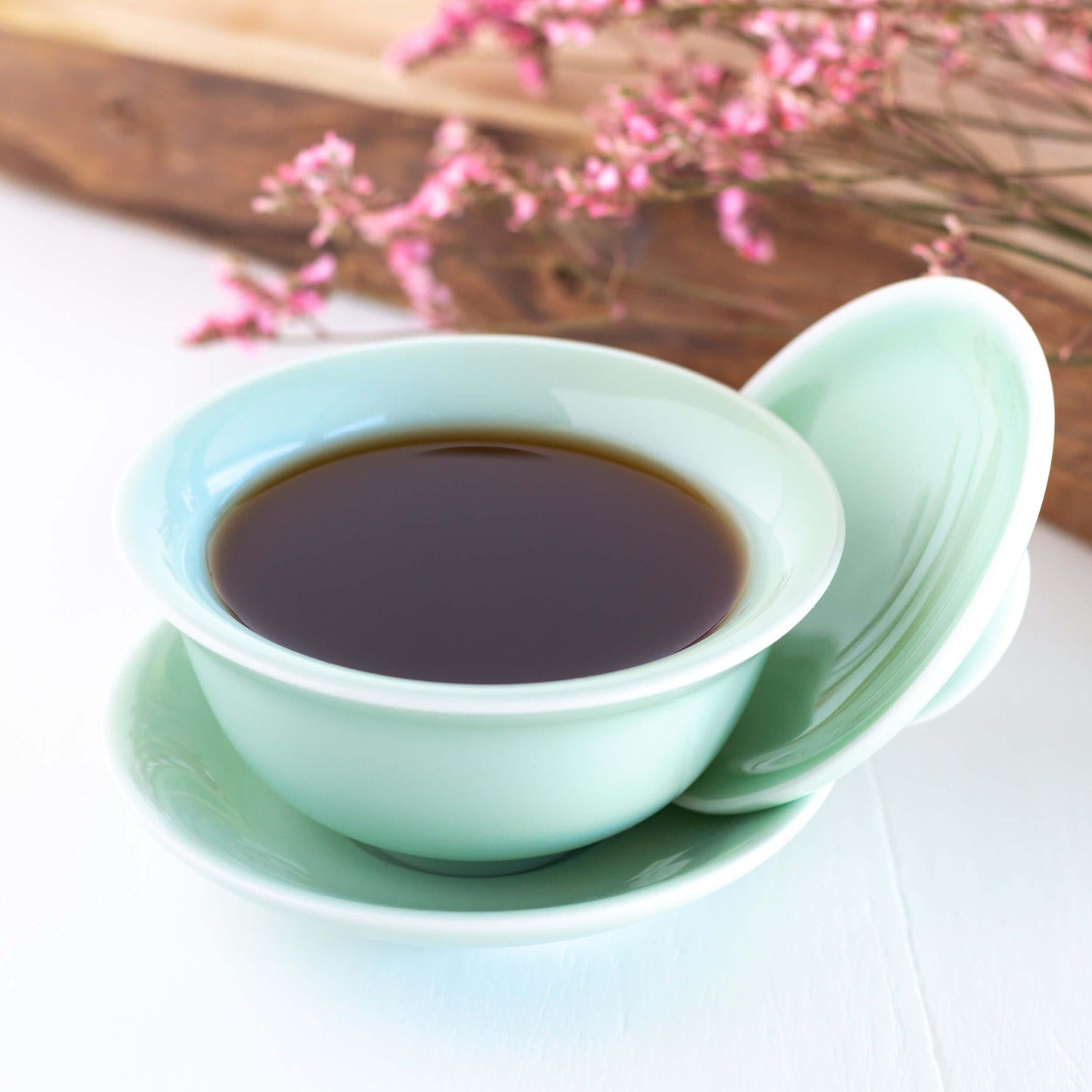About fermented teas
Fermented teas like pu-erh are produced from the leaves of the camellia sinensis plant. A traditional Chinese tea whose cultivation history stretches back hundreds of years, pu-erh originates from the Yunnan province of China. It brews up a deep, dark color and has a mellow, earthy flavor. Thanks to the fermentation process, pu-erh is richer and smoother than other types of tea, without any tannic bite. This tea is enjoyed by collectors and novice tea drinkers alike, and has seen a surge in popularity in recent years as more people become familiar with this unique tea.
Fermentation vs. oxidation
While it’s common for people to use the terms oxidation and fermentation interchangeably, they’re actually different processes. Fermentation involves microbial activity, during which tea leaves begin to break down and decompose. Other fermented foods and drinks include beer, yogurt, and kombucha.
Oxidation, meanwhile, refers to the process of exposing tea leaves to oxygen in order to dry and darken them. Many types of tea undergo some form of oxidation, most notably black and oolong teas. Tea makers often use precise methods to start and stop the oxidation process, in order to finely control the level of oxidation present in each individual tea.
About pu-erh
Pu-erh is a type of heicha, or Chinese black tea. In China, what westerners typically refer to as black tea is called red tea, with black tea referring only to teas such as pu-erh that are fermented and aged after having undergone the oxidation process.
While the exact history of pu-erh and other heicha has been lost to time, the tea most likely has its origins in the Silk Road and other such extensive east-west trade routes. As a fermented and aged tea, pu-erh travelled well, and even improved its flavor, over the long journey it took to reach far off destinations. As such, it became a valuable trade commodity, and quickly spread throughout Asia and beyond.
The tea is named after the city of Pu-erh in Yunnan province, a famed trading post for heicha in imperial China. Bordering Laos, Myanmar, and Vietnam in the southwestern part of China, Yunnan province had extensive trade ties to the west and throughout Asia during imperial times. Today, only tea originating from Yunnan province is legally allowed to be sold as pu-erh, and much of the tea is still processed in the city of Pu-erh itself!
How fermented tea is made
While most teas go through a process of oxidation, few are truly fermented as pu-erh and other heicha are. The tea is first harvested from a varietal of camellia sinensis known for its large leaves and grown in southwestern China. Leaves are most prized if they are picked from older, wild growing trees. Tea harvested from plants that are cultivated but have wild origins, called “wild arbor” trees, is also valuable, while tea grown from plantation bushes is less desirable. The time of harvest also affects the tea, with pu-erh of the highest quality harvested in the spring.
Harvested pu-erh is then dry-roasted in a process called “killing the green,” after which the tea is lightly bruised by rolling and rubbing, and then sun dried. While this process largely halts oxidation, a minimal amount of oxidation continues to occur as it dries, which contributes to the unique flavor and composition of pu-erh.
The tea is then fermented. Shou cha, or ripened pu-erh, undergoes an accelerated process, similar to composting, by fermenting the tea in a humid environment over a time period of months to years. Sheng cha, or raw pu-erh, undergoes a slower, traditional fermentation process, which can take years. Both forms of pu-erh can be further aged in order to continue to develop the flavor of the tea. Similar to wine, pu-erh grows in the depth and complexity of its flavor as it matures, and often increases in both rarity and price with age. Pu-erh that has been aged for many decades can sell for thousands of dollars a pound!
Pu-erh is often pressed into a variety of shapes, such as cakes, bricks, or flat squares pressed with Chinese characters. These can be decorative as well as for consumption.
Fermented tea health benefits
Pu-erh has a long history of being used in China for its medicinal benefits in traditional herbal medicine. Like other varieties of camellia sinensis, pu-erh is full of antioxidants, and has an uplifting, energizing effect thanks to its caffeine content, which is similar to black tea and about half that of a cup of coffee. The fermentation process that pu-erh undergoes produces a tea with other unique health benefits, as well. These include:
- Aids digestion
- Boosts brainpower
- Increases energy
- High in antioxidants
- Lower in tannins
Pu-erh aficionados often speak of a body high that accompanies drinking this tea, which warms you from the inside out and relaxes both the body and the mind. While studies concerning the potential effects of pu-erh are still ongoing, evidence suggests that pu-erh has a wealth of health benefits even over and above other types of tea!
Fermented tea caffeine content
Fermented teas like pu-erh tea tends to be high in caffeine, containing about the same amount of caffeine as black tea and about half as much as a cup of coffee. Some of the factors that influence the caffeine levels of pu-erh teas include:
- Leaf size: Pu-erh tea tends to be made from broken tea leaves, which are more concentrated and therefore higher in caffeine than whole tea leaves.
- Water temperature: We recommend using boiling water to prepare pu-erh tea. The hotter the water, the more caffeine will be present.
- Steep time: We recommend infusing pu-erh teas for about three to five minutes. The longer you infuse your tea, the higher the caffeine level will be.
How to prepare pu-erh
If using a cake or brick of pu-erh, the leaves can be flaked off from the larger whole using a pu-erh knife. The tea should be rinsed by pouring boiling water over the tea and then quickly discarding the liquid in order to remove impurities and prepare the tea for further infusions. Boiling water is then poured over the tea to steep.
Pu-erh is often prepared in a yixing pot or gaiwan using the traditional Chinese Gongfu method. In this method, the tea is steeped in successive infusions, with the first infusions steeping only a few seconds, and later infusions steeping for several minutes. Pu-erh teas prepared in this way can be infused many times, with each successive steeping producing a mellower flavor and exposing different nuances in the taste of the tea.
If preparing in a western style teapot or cup, steep the leaves for one to five minutes before enjoying. Pu-erh prepared in this way can also be steeped several times.
Our fermented teas
At Artful Tea, we sell high quality loose leaf pu-erh. Our Leaf Pu-erh is perfect for pu-erh connoisseurs as well as those looking to dive straight in to the world of fermented tea, and has a rich, mellow, earthy flavor. Our Caramel Pu-erh adds a depth of malty, nutty sweetness to its pu-erh base, and is perfect with a splash of milk as an after-dinner cup of tea or with dessert. Our Dandy Cinnamon Pu-erh includes dandelion root, cinnamon, ginger, and lemon peel, and has a pleasantly tart, uplifting flavor that warms you from the inside out. Whether you’re looking to immerse yourself in the world of pu-erh, or simply try something new, we have just the tea for you!
Our Fermented Tea Collection >>>
FAQs
Is black tea fermented?
Black tea is oxidized but not fermented. During the oxidation process, tea leaves are exposed to oxygen, which darkens the leaves and results in a stronger, more robust cup of tea. Unlike fermented teas, black teas are not aged.
Is green tea fermented?
Green tea is not fermented, and also experiences minimal oxidation. Green teas are typically steamed or pan-fired soon after harvest to halt the oxidation process. Green teas are not aged, and freshly harvested green tea is highly sought after.
Is white tea fermented?
White tea is not fermented. White teas are the most minimally processed type of tea produces from the camellia sinensis tea plant. Leaves are harvested by hand, after which they’re air dried in the sun. The tea leaves experience a small amount of oxidation during this process.
Is fermented tea good for you?
Yes, fermented tea comes with a variety of health benefits! Teas like pu-erh can aid in digestion, improve cognitive function, and give you a boost of energy to power through the day. They’re also smoother and lower in tannins than other types of high-caffeine tea.
